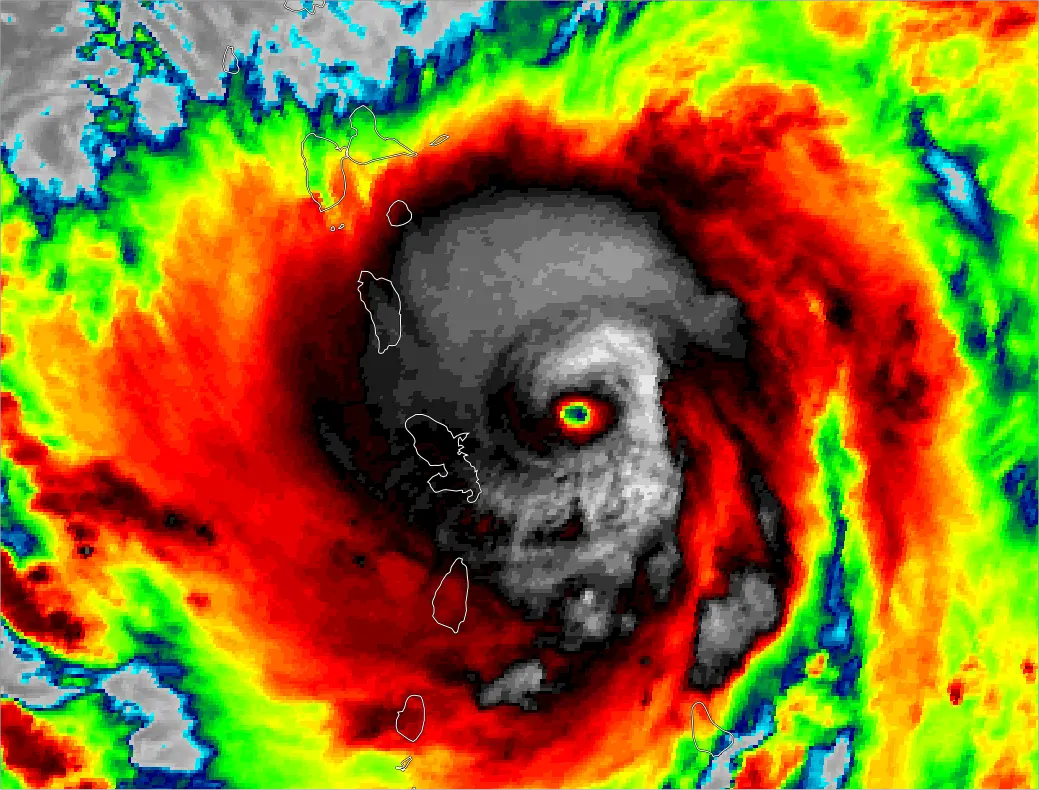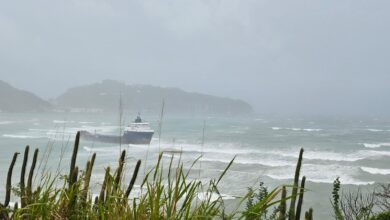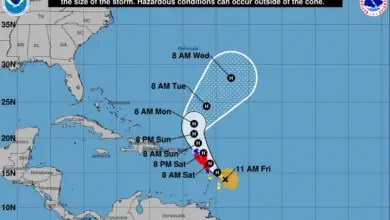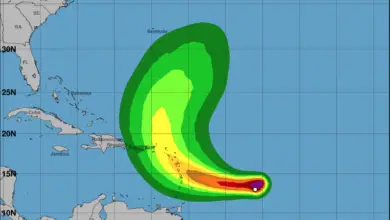The latest update from the National Hurricane Center on Hurricane Maria is in and it’s bad news. The storm has evolved very quickly into a category 4 hurricane. It’s currently located at 15.1N latitude and 60.7W longitude with sustained winds of 130 mph (215 km/hr).
The storm has slowed down slightly since my last update, and is moving west/northwest at 9 mph (15 km/hr). The expectation is that the storm will continue to strengthen over the next 24 to 36 hours, with the possibility of evolving into a category 5 hurricane with winds in excess of 157 mph.
Both Sint Maarten and Saint Martin are under a hurricane watch and a tropical storm warning.
Here is the full text from the NHC:
DISCUSSION AND 48-HOUR OUTLOOK
——————————
At 500 PM AST (2100 UTC), the eye of Hurricane Maria was located
by satellite imagery and data from the French radar on Martinique
near latitude 15.1 North, longitude 60.7 West. Maria is moving
toward the west-northwest near 9 mph (15 km/h), and this general
motion is expected to continue through Wednesday. On the forecast
track, the center of Maria will move near Dominica and the adjacent
Leeward Islands during the next few hours, over the extreme
northeastern Caribbean Sea the remainder of tonight and Tuesday, and
approach Puerto Rico and the Virgin Islands Tuesday night and
Wednesday.Maximum sustained winds have increased to near 130 mph (215 km/h)
with higher gusts. Maria is an extremely dangerous category 4
hurricane on the Saffir-Simpson Hurricane Wind Scale. Additional
strengthening is forecast during the next 24 to 36 hours, and Maria
is expected to be an extremely dangerous major hurricane during the
next couple of days.Hurricane-force winds extend outward up to 25 miles (35 km) from the
center and tropical-storm-force winds extend outward up to 125 miles
(205 km).The estimated minimum central pressure is 950 mb (28.06 inches).
HAZARDS AFFECTING LAND
———————-
WIND: Hurricane conditions should be spreading across Dominica,
Guadeloupe, and Martinique during the next few hours, with tropical
storm conditions already occurring over portions of the Leeward
Islands. Hurricane conditions should spread through the remainder
of the hurricane warning area tonight through Wednesday. Hurricane
conditions are possible within the hurricane watch area Tuesday
through Wednesday, with tropical storm conditions possible
tonight. Tropical storm conditions are possible in the tropical
storm watch area in St. Vincent and the Grenadines through tonight,
and are possible in the tropical storm watch area in the Dominican
Republic on Wednesday.STORM SURGE: A dangerous storm surge accompanied by large and
destructive waves will raise water levels by as much as 6 to 9 feet
above normal tide levels in the hurricane warning area near where
the center of Maria moves across the Leeward Islands and the
British Virgin Islands.The combination of a dangerous storm surge and the tide will cause
normally dry areas near the coast to be flooded by rising waters
moving inland from the shoreline. The water is expected to reach
the following heights above ground if the peak surge occurs at the
time of high tide…Puerto Rico and the U.S. Virgin Islands…6 to 9 ft
The deepest water will occur along the immediate coast near and to
the north and east of the landfall location, where the surge will be
accompanied by large and destructive waves. Surge-related
flooding depends on the relative timing of the surge and the tidal
cycle, and can vary greatly over short distances. For information
specific to your area, please see products issued by your local
National Weather Service forecast office.RAINFALL: Maria is expected to produce the following rain
accumulations through Thursday:Central and southern Leeward Islands…10 to 15 inches, isolated 20
inches.
U.S. and British Virgin Islands…10 to 15 inches, isolated 20
inches.
Puerto Rico…12 to 18 inches, isolated 25 inches.
Northern Leeward Islands from Barbuda to Anguilla…4 to 8 inches,
isolated 10 inches.
Windward Islands and Barbados…2 to 4 inches, isolated 6 inches.
Eastern Dominican Republic…4 to 8 inches, isolated 12 inches.Rainfall on all of these islands could cause life-threatening flash
floods and mudslides.SURF: Swells generated by Maria are affecting the Lesser Antilles.
These swells are likely to cause life-threatening surf and rip
current conditions. Please consult products from your local
weather office.
NEXT ADVISORY
————-
Next intermediate advisory at 800 PM AST.
Next complete advisory at 1100 PM AST.





